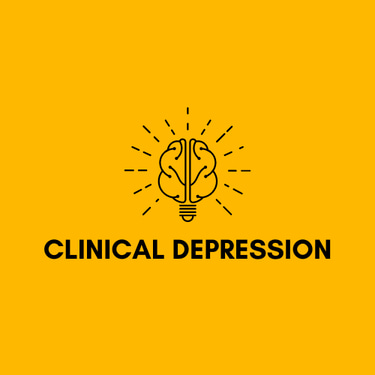For Questions: Text (833)233-0869
Virtual Anxiety Treatment: A Comprehensive Guide to Managing Anxiety and Depression Online


In today's fast-paced world, anxiety and depression have become increasingly common, affecting millions of people globally. With the advent of technology, virtual anxiety treatment has emerged as a revolutionary approach to managing these mental health conditions. This article will delve into the various aspects of virtual anxiety treatment, its benefits, how it works, and why it might be the right choice for those struggling with anxiety and depression.
Understanding Anxiety and Depression
Before diving into virtual anxiety treatment, it's essential to understand what anxiety and depression are, how they manifest, and the impact they can have on an individual's life.
Anxiety is a natural response to stress, characterized by feelings of worry, nervousness, or fear about future events. While occasional anxiety is normal, chronic anxiety can interfere with daily activities, relationships, and overall well-being. Common types of anxiety disorders include Generalized Anxiety Disorder (GAD), Social Anxiety Disorder, Panic Disorder, and specific phobias.
Depression, on the other hand, is a mood disorder that causes persistent feelings of sadness, hopelessness, and a lack of interest in activities once enjoyed. It can affect one's thoughts, behavior, and physical health, leading to various complications if left untreated. Depression often coexists with anxiety, making it crucial to address both conditions simultaneously.
What is Virtual Anxiety Treatment?
Virtual anxiety treatment refers to the use of online platforms, telehealth services, and digital tools to provide therapy, counseling, and support to individuals struggling with anxiety and depression. This form of treatment has gained popularity due to its accessibility, convenience, and the comfort it offers patients in receiving care from their own homes.
Virtual anxiety treatment can include:
Teletherapy sessions: Licensed therapists provide counseling through video calls, phone calls, or chat.
Online support groups: Peer support through online communities where individuals can share experiences and coping strategies.
Digital mental health apps: Apps designed to help manage anxiety and depression through mindfulness exercises, cognitive behavioral therapy (CBT) techniques, and mood tracking.
Remote medication management: Psychiatrists or primary care providers prescribe and monitor medications through virtual consultations.
The Benefits of Virtual Anxiety Treatment
Virtual anxiety treatment offers numerous benefits that make it an appealing option for those dealing with anxiety and depression. Here are some of the key advantages:
Accessibility: Virtual treatment removes geographical barriers, allowing individuals to access mental health care regardless of their location. This is particularly beneficial for those living in rural or underserved areas where mental health services may be limited.
Convenience: With virtual treatment, patients can schedule sessions at times that suit their lifestyle, reducing the need to take time off work or travel long distances to see a therapist.
Comfort and Privacy: Many people feel more comfortable discussing their mental health concerns from the privacy of their own home. Virtual sessions provide a safe space where individuals can open up without the anxiety that may come from a face-to-face meeting.
Cost-Effective: Virtual treatment can be more affordable than traditional in-person therapy. Additionally, it eliminates costs associated with commuting and childcare, making it a cost-effective option for many.
Continuity of Care: Virtual treatment ensures that individuals can continue their therapy even when circumstances, such as travel or illness, prevent them from attending in-person sessions.
Wide Range of Resources: Virtual platforms often offer a variety of resources, such as self-help tools, educational materials, and access to multiple therapists, providing comprehensive care tailored to individual needs.
How Virtual Anxiety Treatment Works
Virtual anxiety treatment follows a process similar to traditional therapy but is conducted through digital means. Here's a step-by-step guide to how it typically works:
Assessment: The process usually begins with an online assessment or an initial consultation to understand the individual's symptoms, medical history, and treatment goals.
Matching with a Therapist: Based on the assessment, the individual is matched with a licensed therapist or counselor specializing in anxiety and depression. Some platforms allow patients to choose their therapist based on preferences such as gender, language, and therapeutic approach.
Scheduling Sessions: Once a therapist is selected, the individual can schedule sessions at a time that fits their schedule. Sessions are typically conducted through video calls, phone calls, or secure messaging.
Therapy Sessions: During therapy sessions, the therapist and patient work together to identify triggers, develop coping strategies, and address underlying issues contributing to anxiety and depression. Cognitive Behavioral Therapy (CBT) is a common approach used in virtual treatment, focusing on changing negative thought patterns and behaviors.
Homework and Follow-Up: Therapists often assign "homework" exercises, such as journaling or practicing mindfulness, to reinforce what was discussed during sessions. Regular follow-ups ensure progress is being made and adjustments can be made to the treatment plan as needed.
Medication Management: If medication is part of the treatment plan, virtual consultations with a psychiatrist or primary care provider allow for remote prescription and monitoring of medication. This ensures that any side effects or concerns can be promptly addressed.
Who Can Benefit from Virtual Anxiety Treatment?
Virtual anxiety treatment is suitable for a wide range of individuals, particularly those who:
Have limited access to mental health services: People living in remote or rural areas where mental health professionals are scarce can benefit significantly from virtual treatment.
Have busy schedules: Individuals who find it challenging to fit therapy into their daily routines can benefit from the flexibility of virtual sessions.
Experience social anxiety: Those with social anxiety may feel more comfortable engaging in therapy from the safety of their own environment.
Prefer privacy: Individuals who are concerned about the stigma associated with seeking mental health care may prefer the anonymity of virtual treatment.
Need continuity of care: Those who travel frequently or have unpredictable schedules can maintain consistent care through virtual sessions.
Challenges and Considerations
While virtual anxiety treatment offers many advantages, it's important to consider potential challenges:
Technology Issues: Reliable internet access and familiarity with digital tools are essential for virtual treatment. Technical difficulties can disrupt sessions and hinder progress.
Lack of In-Person Interaction: Some individuals may miss the personal connection that comes with face-to-face therapy. For certain cases, in-person treatment might be more effective.
Insurance Coverage: Not all insurance plans cover virtual therapy, so it's important to check with your provider before starting treatment.
Emergency Situations: Virtual treatment may not be suitable for individuals experiencing severe mental health crises or those at risk of self-harm. In such cases, immediate in-person care is necessary.
Choosing the Right Virtual Anxiety Treatment Platform
With the growing popularity of virtual anxiety treatment, numerous platforms have emerged, offering a variety of services. Here are some factors to consider when choosing the right platform:
Licensing and Credentials: Ensure that the platform employs licensed therapists and mental health professionals. Verify their credentials and areas of expertise.
User Experience: Choose a platform that is user-friendly and offers a seamless experience. Look for features like easy scheduling, secure messaging, and reliable video conferencing.
Range of Services: Consider what services the platform offers, such as individual therapy, group therapy, medication management, and self-help tools. Opt for a platform that aligns with your specific needs.
Cost and Insurance: Check the cost of services and whether the platform accepts your insurance. Some platforms offer sliding scale fees based on income.
Reviews and Testimonials: Research reviews and testimonials from other users to gauge the platform's effectiveness and customer satisfaction.
The Future of Virtual Anxiety Treatment
The future of virtual anxiety treatment looks promising as technology continues to advance. Innovations such as artificial intelligence (AI) in mental health care, virtual reality (VR) therapy, and enhanced digital tools are expected to further revolutionize the way anxiety and depression are treated.
Moreover, the increasing acceptance of telehealth by both healthcare providers and patients indicates that virtual treatment is here to stay. As more research supports the efficacy of virtual therapy, it is likely to become a standard option for mental health care, offering hope and healing to millions of people worldwide.
Conclusion
Virtual anxiety treatment offers a flexible, accessible, and effective way to manage anxiety and depression. Whether you're seeking therapy for the first time or looking for a more convenient way to continue your mental health care, virtual treatment provides a viable option that fits modern lifestyles. By understanding the benefits, challenges, and how to choose the right platform, you can take a significant step towards improving your mental well-being from the comfort of your own home.
©2025
Clinical Depression
For Questions: Text
(833) 233-0869
